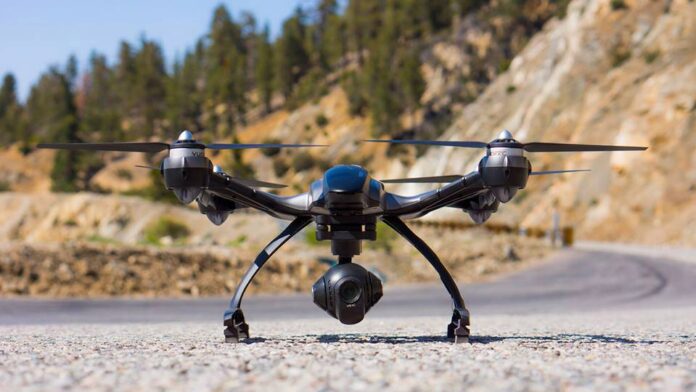The Public Authority for Special Economic Zones and Free Zones (Opaz) continued to pursue a set of aerial and marine surveys and experiments using drones in the Special Economic Zone at Duqm (Sezad).
These experiments come within the framework of empowering entrepreneurs and opening opportunities for the Omani youth to develop their skills and capabilities in this field and carry out their experiments in the zone designated by Opaz for artificial intelligence purposes, which stretches over an area of 18 square kilometres in the zone.
Opaz, in cooperation with Marmul Integrated Company, succeeded recently in implementing a number of experiments and aerial surveys using drones in one of the mining sites in Sezad and positive results had been achieved that helped in taking appropriate decisions aimed at enhancing productivity and proper planning of quarrying and mining sites in addition to enhancing knowledge of safety and security aspects and inventory management.
Ahmed Al Farsi, the Chairman of the Steering Committee to supervise the Artificial Intelligence zone, said that drones are one of the techniques of the Fourth Industrial Revolution that the mining survey experiments using drones were carried out to collect aerial data of the mining sites to be processed through specialised programmes and formed into 3D maps of these sites. She added that the most important outcome of these experiments is creating a scientific database that enhances knowledge of mining research fields. This experience demonstrated the ability of this type of drone to monitor civil works in effective scientific ways and to produce full or partial panoramic images and 3D models of the target lands.
On the other hand, Hussain Habib Al Lawati from ESBAAR Company, which specialises in providing artificial intelligence and drone services, said that ESBAAR has benefited greatly from opening opportunities in this field, and was pleased that Opaz designated a special zone for artificial intelligence with a vast area which enables specialists to launch their projects, works, and experiments. Opaz efforts in this field are remarkable and we had the opportunity to learn more about the special economic zones and free zones, the investment opportunities available, and the business opportunities with the organisations and beneficiary companies in the zone. In addition, the meeting with entrepreneurs and companies specialised in the field of drones, enabled us to share information, discuss challenges and gain knowledge of Opaz’s plans to ease work for investors and entrepreneurs.
Al Lawati added that after carrying out the drone experiments in the special economic zones and free zones, we noticed an increased demand for aerial surveying from investors and engineering consultants in Duqm in particular, and this is an indicator of experiments success, which we are proud of. We are also grateful for Opaz’s contribution in promoting ESBAAR services, he said. He added that they have received many requests from Oman and abroad, and recently from South Africa, to carry out aerial surveying of usufruct lands at Duqm.
He added, “ESBAAR carried out a variety of works in the areas affiliated with Opaz, and our technologies have been used in the inspection work in Sohar free zone, as well as examining Thermal towers – or what is known as toxic gas incinerators – in the refinery, as well as various works for geological surveying, and 3D modelling for the buildings and assets in Duqm and Sohar.
Al Lawati concluded that the experiments conducted in Sezad involved using two types of drones for aerial survey and three-dimensional modelling of the Duqm Frontier building. These experiments contributed to increasing knowledge of the weather conditions and the nature of Duqm through the data collected for similar projects. In addition, the experiments contributed to promoting the services of ESBAAR in the zone.



